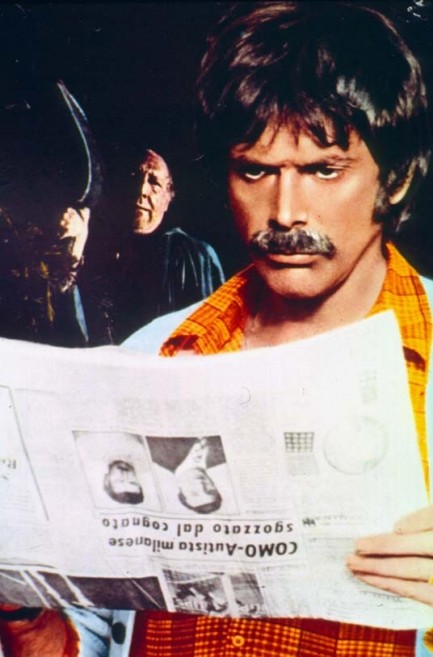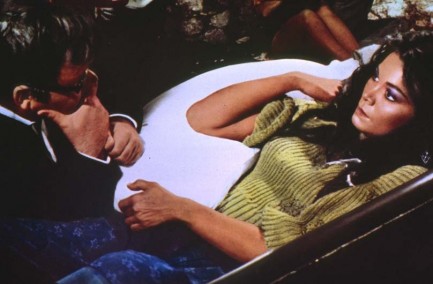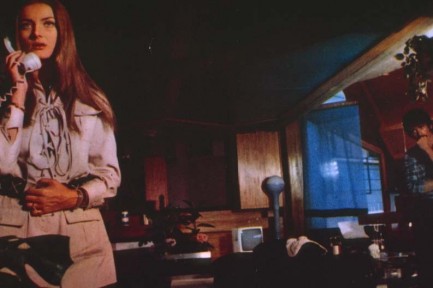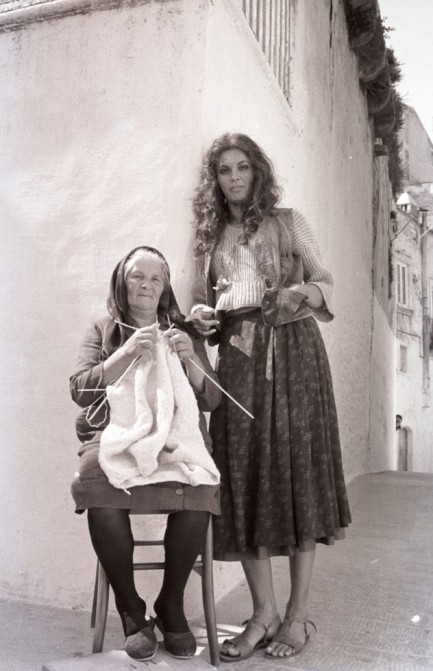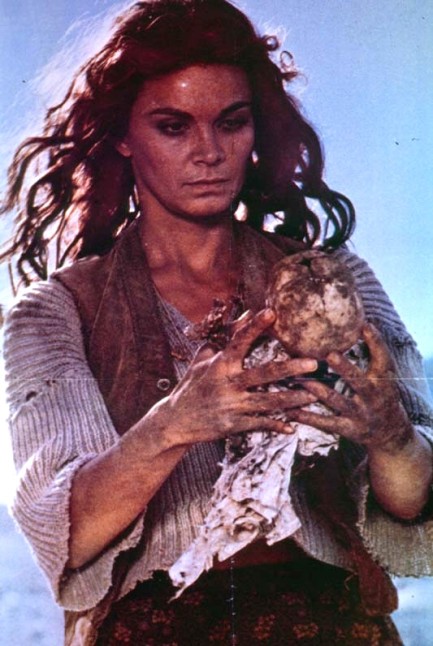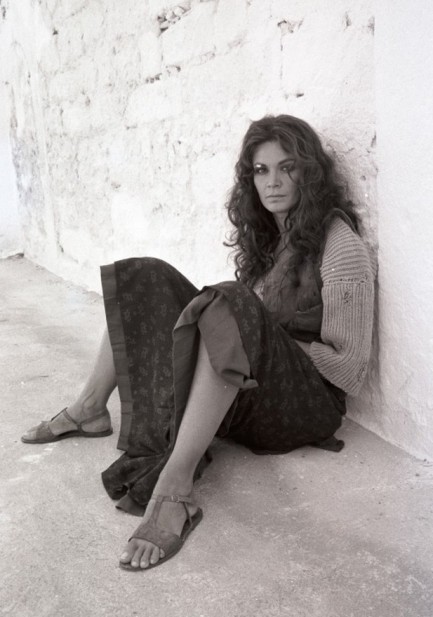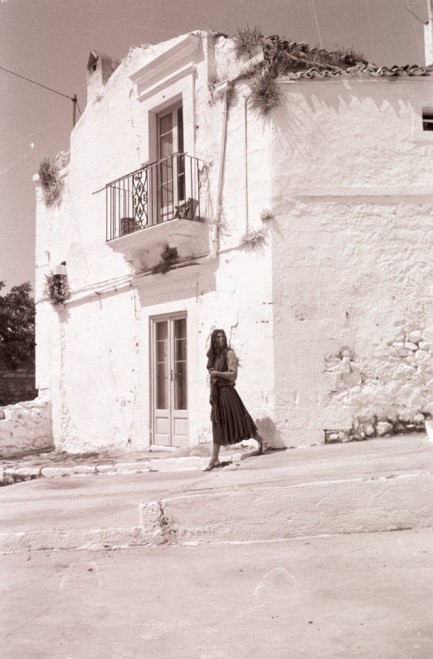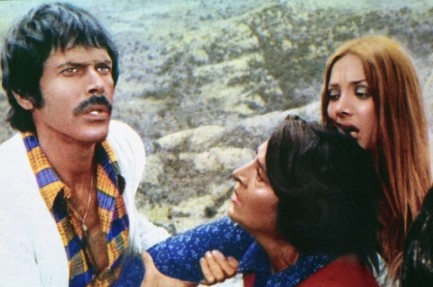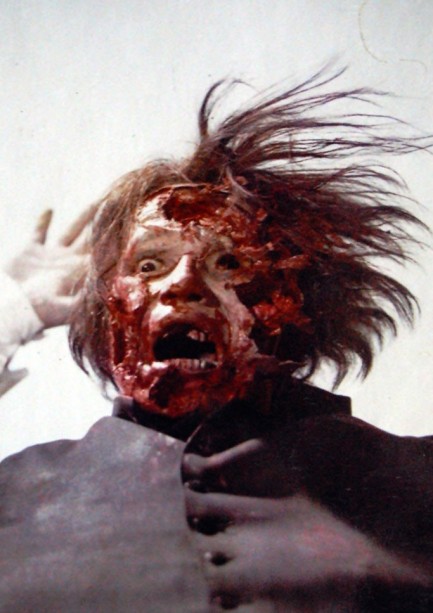| Vintage Pulp | Sep 29 2018 |

What's mostly style and virtually no logic? A typical giallo.
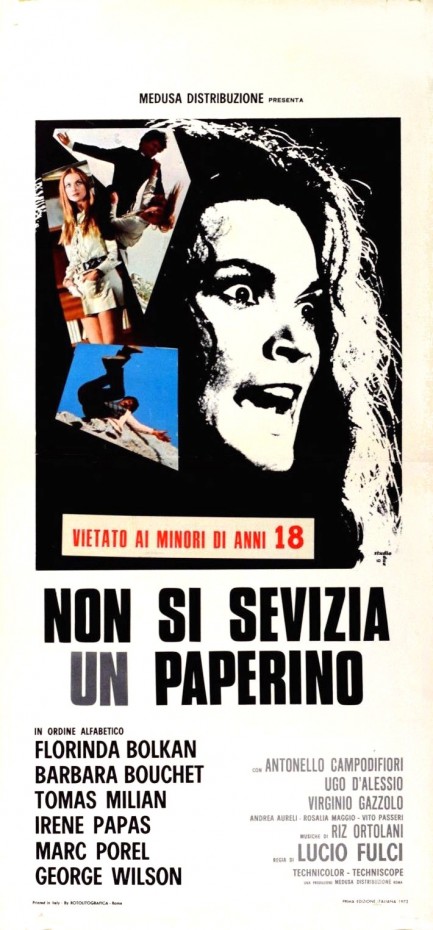
Giallo films occasionally take on taboo subject matter. In western cinema little is more taboo than child murder. Non si sevizia un paperino, aka Don't Torture a Duckling unabashedly uses this premise, as police in rural Italy try to solve the murder of a 12-year-old named Bruno. “The guy's obviously going to be a mental case,” one cop says. “The killer's a maniac,” says another. But cops are notoriously obtuse in these films. Was the killer really some nut job? Bruno was one of a trio of close friends who spent a lot of time together playing in the hills. When a second member of the group turns up dead it seems clear that the three boys saw something they shouldn't have and are now being targeted.
As usual in giallo there are extraneous moments littered throughout the plot. Why does creepy ass Florinda Bolkan play in the muck with three voodoo dolls that seem to represent the three boys? Why does a local farmer wander the woods during a late night thunderstorm chopping down foliage with a machete? Why does Barbara Bouchet lounge in her room nude under a sun lamp? Actually, we know the answer to that last question—the filmmakers had one of cinema's great beauties on their hands and weren't about to let the opportunity to show her pass. We couldn't let it pass either. See the promo images below.
Getting back to the positives, we enjoyed watching sex symbol Bolkan dirty herself up to play a mountain witch, loved Bouchet's assortment of ultra cool outfits and cars, and thought the filmmakers used the Basilicata countryside to good effect. But who did the killing? Was it Bolkan the witch? The big city drug addict? The handsome local priest? The mentally disabled man-boy? The priest's strange mother? Giallo mysteries are not usually written in such a way as to be solvable, so in truth it's hard to care. But even if Non si sevizia un paperino isn't an involving puzzle, it's great eye candy with a bizarrely graphic ending that must be seen to be believed. It premiered in Italy today in 1972.
Getting back to the positives, we enjoyed watching sex symbol Bolkan dirty herself up to play a mountain witch, loved Bouchet's assortment of ultra cool outfits and cars, and thought the filmmakers used the Basilicata countryside to good effect. But who did the killing? Was it Bolkan the witch? The big city drug addict? The handsome local priest? The mentally disabled man-boy? The priest's strange mother? Giallo mysteries are not usually written in such a way as to be solvable, so in truth it's hard to care. But even if Non si sevizia un paperino isn't an involving puzzle, it's great eye candy with a bizarrely graphic ending that must be seen to be believed. It premiered in Italy today in 1972.
